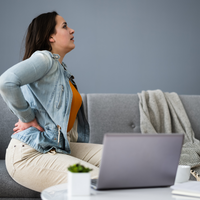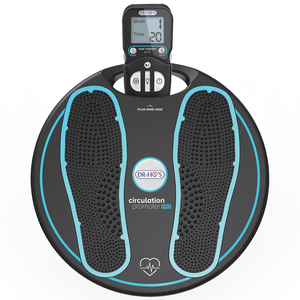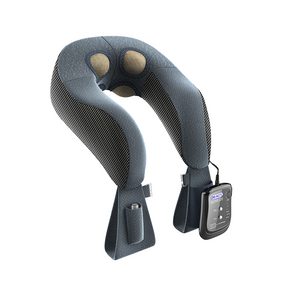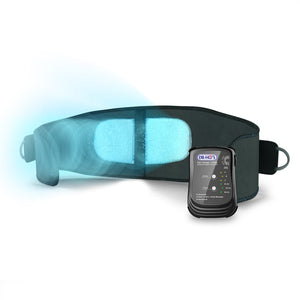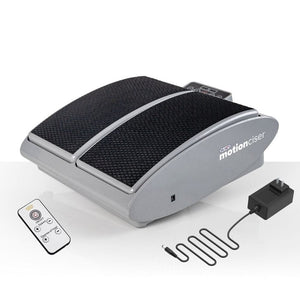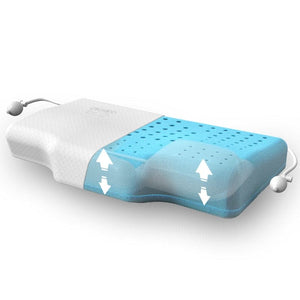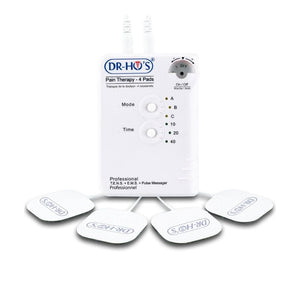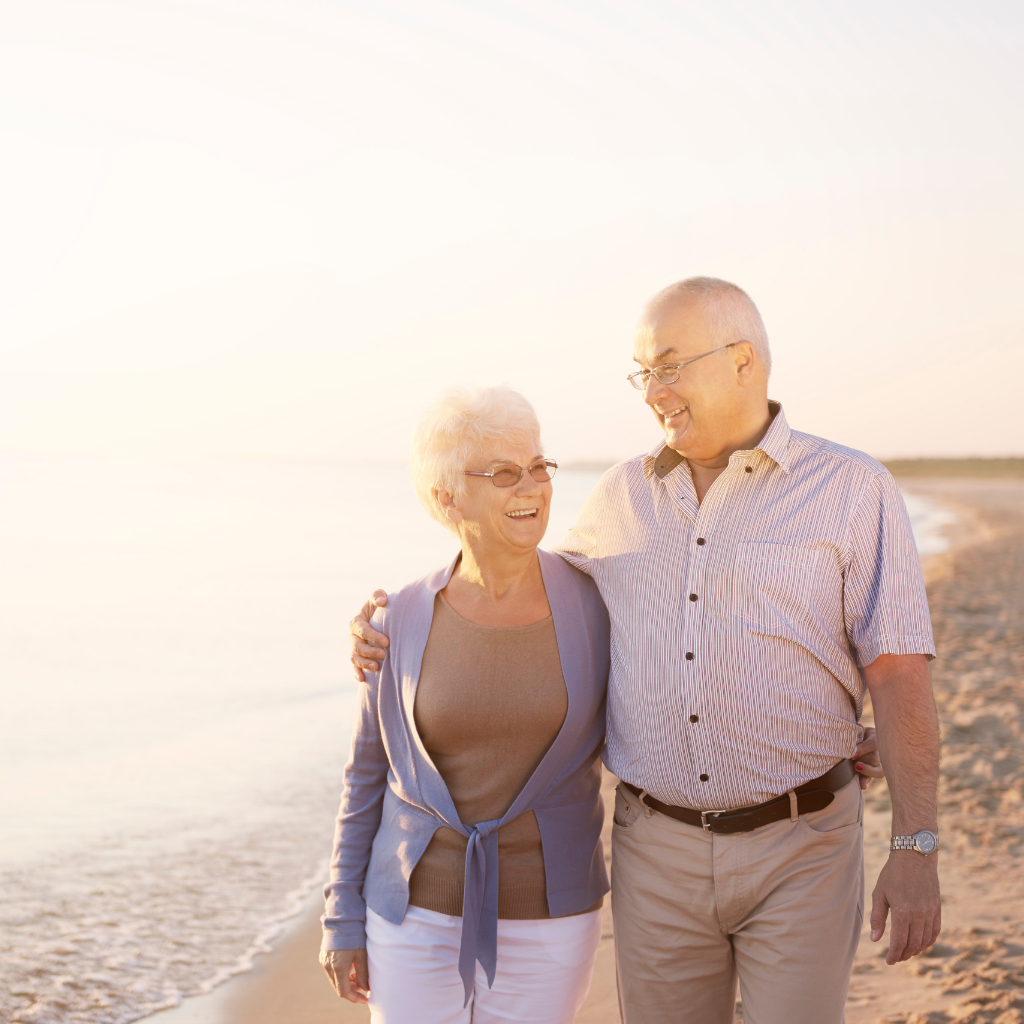Understanding old age aches and pains
Are you having more frequent aches and pains, feeling stiff in your joints and getting slower on your feet as the years go by? You're not alone! This is a completely normal result of aging. No one can stop the clock, but getting older doesn’t mean you have to completely limit or cut off your activity. The key is to find ways to counteract old age aches and pains and get moving in a way that feels comfortable and pain-free.
Keep on reading as we answer common questions about age-related pains and highlight a few pain relief tips that will allow you to manage your pain no matter your level of fitness.
Why does aging bring aches and pains?
As we age, there are changes to our bones, muscles and joints that can lead to aching, soreness and pain.
Age-related changes in the bones
The structure of our bones changes as we get older and this results in reduced bone tissue. Low bone mass means bones are weaker and that places people at risk of breaking bones from a sudden bump or fall. Here are a few reasons that cause our bones to lose their density as we age:
- A less active lifestyle can cause stiffness in the bones
- Hormonal changes affect both men and women, causing loss of minerals in bone tissue and development of osteoporosis (those who has osteoporosis are at greater risk of bone fractures)
Age-related changes in the muscles
Muscles lose their size as we get older, which can contribute to fatigue, weakness and reduced tolerance to physical activity. This is caused by a number of factors including:
- Muscle fibres reduce in number and shrink in size
- Lost muscle tissue is replaced by tough and fibrous tissue
- Changes in the nervous system that cause muscles to reduce the ability to contract and relax properly
Age-related changes in the joints
Our bones do not directly connect but are cushioned by cartilage that lines the joints, synovial membrane and lubricating fluid. As we age, the ligaments and tendons that hold our joints together become “stiff and leathery”, the lubricating fluid decreases and the cartilage becomes thinner. Being inactive causes the cartilage to shrink and stiffen, reducing joint mobility.
Degenerative disc disease
When discs in the neck and lower back degenerate, the soft material inside the discs may bulge out or rupture, pressing on the nerves or spinal cord. A slipped disc is a common cause of nerve pain and lower back pain. Depending on the affected discs, you could experience neck pain, lower back pain or sharp, shooting pain in the hips and down the legs.

Are my aches and pains a medical issue?
It is important to note that, sometimes, joint or muscle pain could indicate a medical problem that needs to be diagnosed and treated. Listen to your body and use your judgement; if it’s severe, comes on suddenly, or has you worried, see your doctor. Ultimately, it is never a bad decision to see a trusted doctor for any new or worsening pain or discomfort.
How do I find relief from aches and pains that come with aging?
Though aging is a natural process, it doesn’t mean that we’re destined to feel more pain or that we need to tolerate it.
The key to feeling fewer aches and pains is to maintain flexibility, strengthen muscles through daily exercises and boost your diet with healthy fats, protein and vitamins.
1. Types of exercise that are beneficial for old age aches and pains
Studies have shown that people over 65 who exercise regularly are healthier and are less likely to develop serious long-term health conditions than those who don’t. Regular exercise can reduce your risk of developing osteoporosis, osteoarthritis and back pain.
Exercise can also improve the strength and tone of your muscles and can allow you to continue with everyday activities with more independence and confidence.

Aerobic Activities
Not all of us are the sporty type, but physical activities can take many forms and aerobic exercise is one of them. These types of exercises are ones that we can do anywhere and anytime. Whether it’s taking the stairs instead of the elevator, walking instead of driving, or kick-starting your day with a light and energy-boosting exercise.
If you enjoy taking walks, it may be helpful to use a pedometer or step counter to see how active you are and track your progress. This may help you determine how you could optimize your activity, especially at certain times of the day or on certain days of the week. There are no official rules on how many steps you should do each day, but the more steps you do, the better your fitness and health can become over time. Movement of the joints and the associated “stress” of movement helps to keep the lubricating fluid moving, and in return, increase your range of motion.
In the summertime, it may be a good idea to try swimming or water aerobics, this type of exercise can help maintain muscle mass and promote flexibility while being low-impact.

Balance and Coordination Exercises
As we age, we are more vulnerable to falls and fractures. Work at keeping your muscles and joints flexible with a balance and coordination exercise such as tai-chi, yoga, cycling and even dancing. Keep in mind, it’s never too late to start! Once you’ve built up your fitness gradually, try having a go at a few different activities and see what suits you best!
Strengthening Practices
A complementary component to a well-rounded exercise program is strengthening exercises. Though it’s commonly thought that we lose muscle strength as we age, it’s possible to limit how much strength we lose and how much we gain.
Strengthening exercises doesn’t have to mean lifting heavy weights — the following daily activities can help too! To enjoy even better results, try pairing these with flexibility exercises.
To increase chest and shoulder strength:
- Stand about 3 feet away from a wall, facing the wall, with your feet shoulder-width apart.
- Lean forward and place your hands flat on the wall, in line with your shoulders. Your body should be in plank position, with your spine straight, not sagging or arched.
- Lower your body toward the wall and then push back.
- Repeat 10 times.
To increase strength and stability in the feet:
- Sitting in a chair and keeping your heels on the floor, lift your toes high enough that you can feel the muscles along your shin working. (This helps keep blood circulating in your legs and also strengthens the lower leg.)
- Repeat 20 times.
To increase strength in the abdominal muscles:
- Lie on your back, take a deep breath and tighten your abdominal muscles.
- Hold for 3 breaths and then release the contraction.
- Repeat 10 times.
Try doing these exercises regularly and see the difference in your physical, mental, and emotional health.
2. A purposeful diet to support your bones, muscles and joints
For those suffering from old age aches and pains, experts say a diet makeover with a focus on healthy fats, low-fat protein and vitamin D and E can have a positive impact. Research shows that diet should be an integral part of a pain management program — especially as patients age.
These diet tips can help you get started:
- Eat the rainbow: Cruciferous vegetables such as broccoli, brussels sprouts, cabbage and cauliflower are best as they can help fight inflammation, which is the main cause for conditions such as arthritis and osteoarthritis.
- Increase vitamin D intake: Strengthen bones by helping your body absorb more calcium through vitamin D. Low-fat dairy products and canned whole sardines are good sources of calcium.
- Opt for low-fat protein: Maintain muscle mass by getting plenty of low-fat protein. Fish is ideal and try to limit your red meat consumption.
- Include healthy fats: Substitute butter and fat with these vitamin-E-rich olive oils, salmon, almonds, peanut butter and avocados.
Diet plays an extremely important role in helping you manage your weight while supporting your bones, muscles and joints, which in turn, can help to prevent old age aches and pains.

3. TENS & EMS Therapy for aches and pains
TENS Therapy (Transcutaneous Electrical Nerve Stimulation) is delivered via a TENS device that conducts safe, gentle electrical stimulation through conductive, adhesive pads to pain-affected areas. Certain TENS devices also use EMS (Electrical Muscle Stimulation) to target both the nerves and the muscles with gentle, yet powerful stimulation. A TENS device can be an effective choice for pain sufferers looking for temporary pain relief when it strikes. Learn more about what TENS and EMS are:
TENS Therapy: TENS gently stimulates the nerves to help reduce pain signals sent to the brain and provide temporary relief of pain. Additionally, TENS therapy is thought to aid in the release of endorphins — a naturally occurring chemical that may also provide temporary pain relief.
EMS Therapy: EMS gently stimulates healthy muscles, causing them to contract and relax in order to increase local circulation and soothe sore and aching muscles. Stimulating healthy muscles can also help to improve and facilitate muscle performance. Turn it on and start to feel the soothing stimulations!
Find more information on TENS and product recommendations for pain relief:
- Discover the Triple Action Back Belt Pain Therapy Device
- Discover the Pain Therapy System 4-Pad
- Learn more about how a TENS machine works to temporarily relieve pain
- Find out how to place body pads from your DR-HO’S device to target back spasms
- The Upper Back Pain Relief Checklist: Relieve Tightness, Aches, Pains and Stiffness
-
5 Lower Back Pain Relief Stretches & Simple Yoga Moves [Updated for 2021]

Enhance your daily routine with these tips to prevent aches and pains as you age!
Aging doesn’t have to be accompanied by aches and pains. We hope you come away from this with valuable information that helps you establish a pain management routine with confidence and ease. Find what works best for you and start feeling better!

